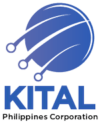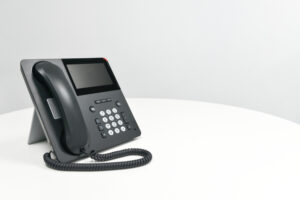In the past, businesses depended on conventional phones (otherwise known as the plain old telephone system or POTS) for communications. POTS, however, can be problematic, especially for growing businesses. The system, which can only accommodate one user at a time, is incapable of completing a huge volume of calls unless they have a personal number. If your business has branches in several locations, you’ll need a new connection and a new number for each, even if your branches are in the same city.
As your company grows, you’ll need more phones to support your team, suppliers, and customers. However, the cost of installing and maintaining lines causes businesses to hesitate to invest in the technology. Fortunately, you have a viable alternative in Private Branch Exchange (PBX) and Private Automatic Branch Exchange (PABX) systems—Voice over Internet Protocol (VoIP) options that overcome the physical limitations of POTS.
So, PBX vs. PABX — is there a difference?
There is a common misconception that PABX is an upgraded version of PBX. These terms, however, are more or less synonymous. The word “Automatic” in PABX sets the two apart. PABX is an automated version of the PBX. All of PABX’s processes are automated while PBX uses switchboards manned by live operators.
But what are their other, more specific differences? How do they work?
The PBX System
PBX is a telephonic system that enables enterprises to connect using external phone lines. PBX is a cost-efficient system and offers a more affordable way to get a line for all of your users. Telephone companies do not operate PBXs; the VoIP service provider does.
During the earlier days of PBX, the system used analog technology. Now, the system uses digital technology to manage outgoing and incoming calls.
Welcome faster turnover rates with a modern, adaptive business phone systems. We have a PBX system that fits your business.
How Do PBX Systems Work?
Users of PBX systems communicate externally or internally using different communication channels. A PBX allows you to have more phones and offers free calls between users.
The equipment used in PBX systems varies depending on the system used. There are two types of PBX systems: traditional and virtual.
A traditional PBX phone system uses landline copper-based phone lines installed in a business’s premises, where they are connected to a PBX box. You may have a system lock-in (where the phones are bound to the same system) or vendor lock-in (where the company is bound to one vendor and the phones are only usable with systems from that same vendor).
A virtual PBX, on the other hand, allows businesses to transfer incoming calls and direct them to the right person, as well as provide them with automated answering services. Virtual PBX calls can be routed to cell phones, VoIP extensions, or landlines. They are ideal for smaller businesses and organizations that utilize remote teams.
Generally, the cost of virtual PBXs is lower than physical PBX or hosted systems.
The PABX System
PABX is the solution for businesses in need of numerous lines for outside and in-house calls. This phone system enables your organization to use a single access number with several extensions. Plus, it’s a more affordable communication compared to using many landlines connected to a single network.
While PABX systems do not fully eliminate the need for manual action, they reduce the need for operators since they automatically connect the calls. The only time you’ll need operators is when you need to supply callers with information.
PABX functions include electronic switching, which allows the system to integrate features exclusive to automated systems. These include call waiting, voicemail, call conferencing, internet connectivity, and automatic ringback.
How Does PABX Work?
Typical PABX systems have both hardware and software, which include fax machines, routers, adapters, modems, and switches. With a PABX, your company can run its internal phone network using local extension numbers. These numbers correspond to specific devices and phones used by the company.
PABX systems often greet incoming calls with recorded messages. This greeting, also called Interactive Voice Response (IVR), requests the caller to dial a number to reach a specific department.
PABX and PBX can be used interchangeably since they perform the same function. What sets them apart is PABX’s enriched take on PBX’s current capabilities.
Different Types of PBX and PABX
There are different types of PABX and PBX systems, each type having a particular strength and weakness. As a result, businesses can maximize their systems differently, depending on the business’s size, available resources, and the average number of callers. Consider the pros and cons of the following types first before you settle on a particular PBX or PABX system:
IP PBX
The advent of the Internet led telecommunications experts to integrate Internet protocol into PBX. As the name suggests, Internet Protocol Private Branch Exchange (IP PBX) enhances the traditional telephone switchboard by using Internet connectivity to link calls between:
- Traditional telephone users
- A traditional telephone number and a Voice over Internet Protocol (VoIP) line
- Local or internal VoIP lines
How Does an IP PBX Work?
You can upgrade an existing PBX system into IP PBX by integrating session initiation protocols or SIP trunks. SIP trunking enables VoIP in IP PBX —-which is a technology responsible for starting and terminating conversations between two or more users in an IP network. These real-time calls can be audio-only or video conference calls.
SIP trunks can connect multiple phone numbers into a PBX, allowing various members of your company to use one external number when making outbound calls. The interconnected lines are an advantage for B2B transactions as it streamlines communications with suppliers and partners. SIP trunking also allows you to make long-distance and international phone calls through the Internet, which can significantly reduce your monthly phone bill.
What Are the Benefits of IP PBX?
Besides the cost savings on telecommunication hardware installations and service charges, IP PBX systems offer other benefits to small and large businesses:
- Scalability – IP PBX runs on computer software, which is easy to configure according to your enterprise’s needs.
- Flexibility – Administrators or developers can add software-based features to boost your IP PBX functions. Examples of these features are voice mail and an automated attendant.
- Mobility – IP PBX extensions can be moved anywhere in your office, eliminating the need to re-patch and re-wire telephone lines. You can even use your mobile phone to make calls using your extension, thanks to the SIP software protocol.
Hybrid PBX/PABX
Did you know that you can upgrade your PBX/PABX infrastructure to include cloud functionalities? You may do so by upgrading your current systems to Hybrid PABX/PBX.
Hybrid PABX/PBX combines existing legacy equipment with VoIP to deliver greater flexibility and more advanced capabilities. Common PBX systems connect internal users with primary rate interference (PRI), which has 24 channels and connects to hundreds of phones. With a hybrid PBX, the PRIs connect to a device (the hybrid PBX itself), and the two devices connect to outside callers via SIP credentials and PSTN trunks.
How Does Hybrid PBX/PABX Work?
Hybrid PBX integrates the same convenient VoIP features, such as call rules and auto-attendant. It also allows fax over IP, video conferences, and virtual conference rooms.
The hybrid PBX also has numerous IP extensions to connect directly to your office’s IP phones. On one side of the device, there are several telephone and Ethernet jacks; on the other, there is a LAN (to connect to the internal network), WAN (to connect to the Internet), LED lights (to indicate active lines), and a console port.
What Are the Benefits of Hybrid PBX?
A hybrid PBX has the same excellent features that you would expect from VoIP services, including auto-attendant, hold queues, and call rules. It also allows SIP trunking, which means you can connect multiple channels to your PBX/PABX so you can make local or international calls over the Internet. If either the VoIP server or the legacy phone works, the hybrid PBX will automatically switch to the other network, preventing disruptions in operations.
One of the biggest advantages of having a hybrid PBX is simplified calls for businesses with secondary locations and remote offices. Calls from one office to another will go through the hybrid system, reducing (and even eliminating) long-distance charges. If your location is temporary (e.g., construction sites), you may use cordless phones to connect to your hybrid PBX instead of using the building’s phone lines.
How Can PBX and PABX Help Your Business?
The unique capabilities of PBX take this system from a simple communication platform to a machine that prompts new business processes and streamlines operations. Here are some of the things a PBX/PABX system can do for your business:
- Seamless Call Management: Switch between departments and users without dropping calls, ensuring smooth communication.
- Enhanced Workforce Management: Increase efficiency rates with features like call recording and email and call transcription, providing historical data for workforce management.
- Customer Care Center Setup: Establish a customer care center to address customer concerns from various locations.
- Customized Greetings: Greet customers and partners with customized pre-recorded messages and choose appropriate music while they wait to be connected.
- Flexible Call Management: Manage and transfer calls based on your specific schedule, ensuring no important calls are missed, even when out of the office.
- Scalability for Remote Operations: Expand your hosted PBX to accommodate the size and requirements of your business, ideal for multiple remote locations or startups relying on the gig economy.
- Increasing Security: VoIP mitigates security threats by leveraging IP technology, including encryption, firewalls, and intrusion prevention systems.
With the recent challenges posed by COVID-19, the importance of having PBX/PABX systems in place has become even more evident. Many businesses transitioned from traditional telephony to on-premises or on-site IP-PBX, allowing for easier remote work transitions with cloud-based VoIP support.
Ultimately, whether a company has on-premises IP-PBX or opts for hosted or cloud PBX, the benefits of VoIP are accessible. These include cost savings, efficient call routing, and an overall enhanced customer and employee experience.
Partnering with Kital: The Top PBX Provider in the Philippines
Today’s workforce is always on the move, and modern business phone systems are adapting to cater to their needs. Switching from a traditional business line to a PBX system can help teams adapt to increasing demands and fast turnover rates as well as cater to customer concerns despite geographic challenges.
That said, Kital is one of the leading PBX providers in the country, offering superior customer service and telecom solutions to businesses. We’ll point you to a system that suits your budget and business needs, making sure you enjoy significant savings in maintenance and operating costs.
Contact us today to learn more about our telecom solutions.




